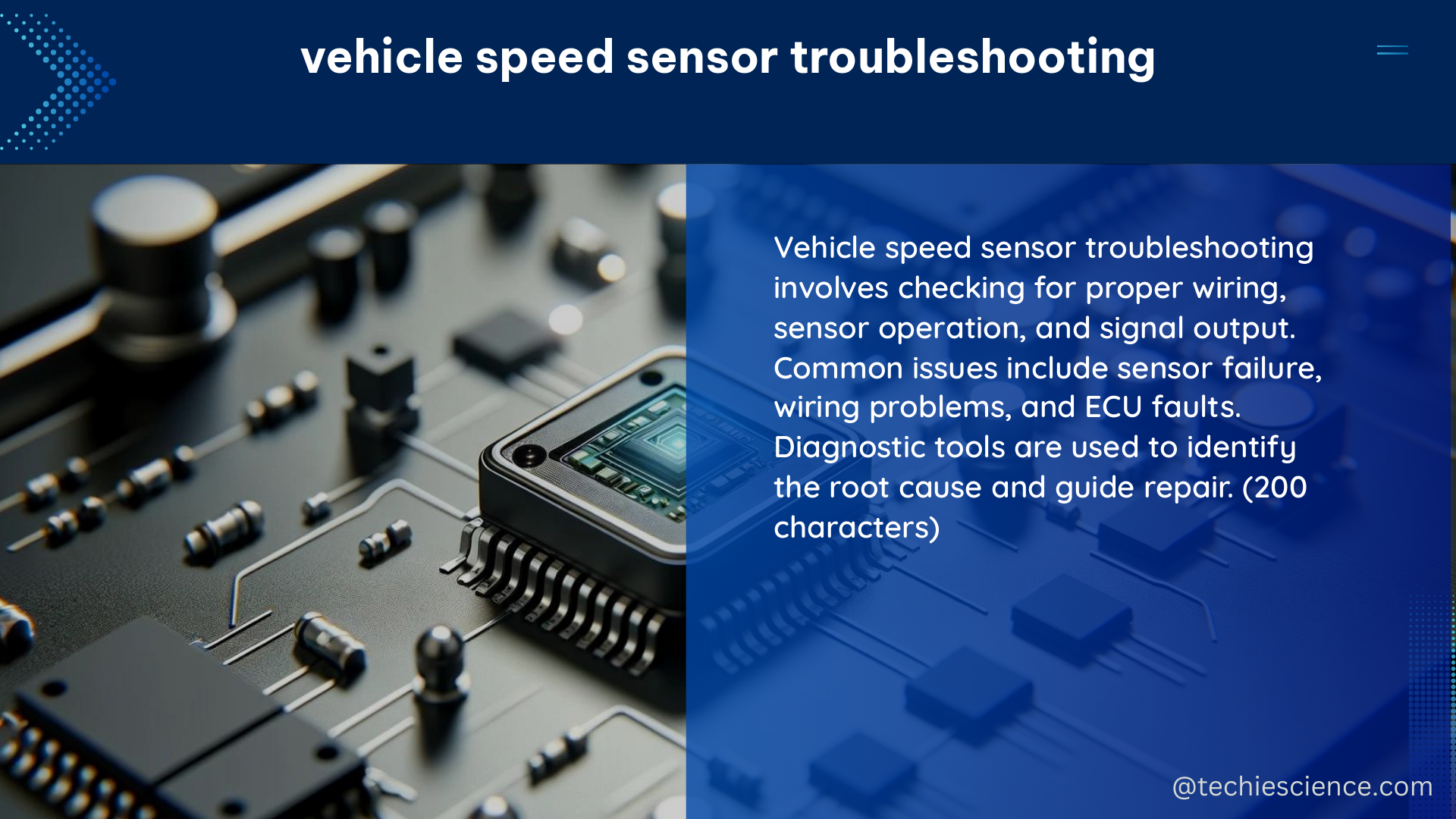The vehicle speed sensor (VSS) is a critical component in modern vehicles, providing essential speed data to various systems such as the anti-lock braking system (ABS), electronic stability control (ESC), and powertrain control module (PCM). Proper diagnosis and repair of VSS issues are crucial for maintaining optimal vehicle performance, fuel efficiency, and safety.
Understanding the VSS Design and Operation
The VSS is typically located on the transmission or differential and uses a toothed wheel or a magnetic sensor to generate speed signals. These signals are then transmitted to the PCM or other control units via a wiring harness. The frequency and amplitude of the alternating voltage generated by the VSS are directly proportional to the wheel speed.
Key VSS Design Specifications
- Sensor Type: Toothed wheel or magnetic sensor
- Sensor Location: Transmission or differential
- Output Signal: Alternating voltage
- Voltage Range: Typically 0.5 to 12 volts
- Frequency Range: Varies based on vehicle speed and sensor design, but can range from 1 Hz to 1 kHz
Understanding the specific design and operating parameters of the VSS in your vehicle is crucial for accurate diagnosis and troubleshooting.
Fault Diagnosis: Identifying VSS Issues

Diagnostic trouble codes (DTCs) related to the VSS can provide valuable insights into the nature and location of the problem. These DTCs can be accessed using an OBD-II scanner or diagnostic tool.
Common VSS-Related DTCs
- P0500: Vehicle Speed Sensor (VSS) Malfunction
- P0501: Vehicle Speed Sensor (VSS) Range/Performance
- P0502: Vehicle Speed Sensor (VSS) Low Input
- P0503: Vehicle Speed Sensor (VSS) Intermittent/Erratic
By analyzing the specific DTC, you can determine whether the issue is related to a wiring or connector problem, a faulty VSS, or a more complex system-level fault.
Testing and Repairing the VSS
Proper testing of the VSS and its associated wiring is essential for accurate diagnosis and effective repair. This typically involves the following steps:
- Visual Inspection: Check for any physical damage, corrosion, or loose connections in the VSS and its wiring harness.
- Voltage and Resistance Measurements: Use a multimeter to measure the voltage and resistance of the VSS and its wiring. Refer to the vehicle service manual for the expected values.
- VSS Voltage: Typically 0.5 to 12 volts, depending on vehicle speed
- VSS Resistance: Typically 500 to 2,000 ohms
- Signal Verification: Use an oscilloscope to observe the VSS signal waveform and ensure it matches the expected frequency and amplitude.
- Signal Frequency: Varies based on vehicle speed and sensor design
- Signal Amplitude: Typically 0.5 to 12 volts
- Repair or Replacement: If the VSS or its wiring is found to be faulty, clean, repair, or replace the necessary components. In some cases, reprogramming the PCM may also be required.
Safety Considerations
Proper repair and maintenance of the VSS and related systems are critical for safe vehicle operation. Faulty VSS signals can affect the performance of the ABS, ESC, and other safety systems, increasing the risk of accidents and injuries.
Potential Safety Risks
- Reduced ABS and ESC functionality
- Inaccurate speedometer and odometer readings
- Improper engine and transmission control
Ensuring the VSS is functioning correctly and providing accurate speed data is essential for maintaining the integrity of the vehicle’s safety systems.
Conclusion
Vehicle speed sensor troubleshooting requires a thorough understanding of the VSS design, fault diagnosis, testing, and repair procedures. By following the guidelines and best practices outlined in this comprehensive guide, you can effectively identify and resolve VSS-related issues, ensuring your vehicle’s optimal performance, fuel efficiency, and, most importantly, safety.
References
- Vehicle Speed Sensor Diagnostics
- Check and Change ABS Sensor
- The Case of the Missing Vehicle Speed Sensor Data
- Vehicle Speed Sensor Symptoms

The lambdageeks.com Core SME Team is a group of experienced subject matter experts from diverse scientific and technical fields including Physics, Chemistry, Technology,Electronics & Electrical Engineering, Automotive, Mechanical Engineering. Our team collaborates to create high-quality, well-researched articles on a wide range of science and technology topics for the lambdageeks.com website.
All Our Senior SME are having more than 7 Years of experience in the respective fields . They are either Working Industry Professionals or assocaited With different Universities. Refer Our Authors Page to get to know About our Core SMEs.